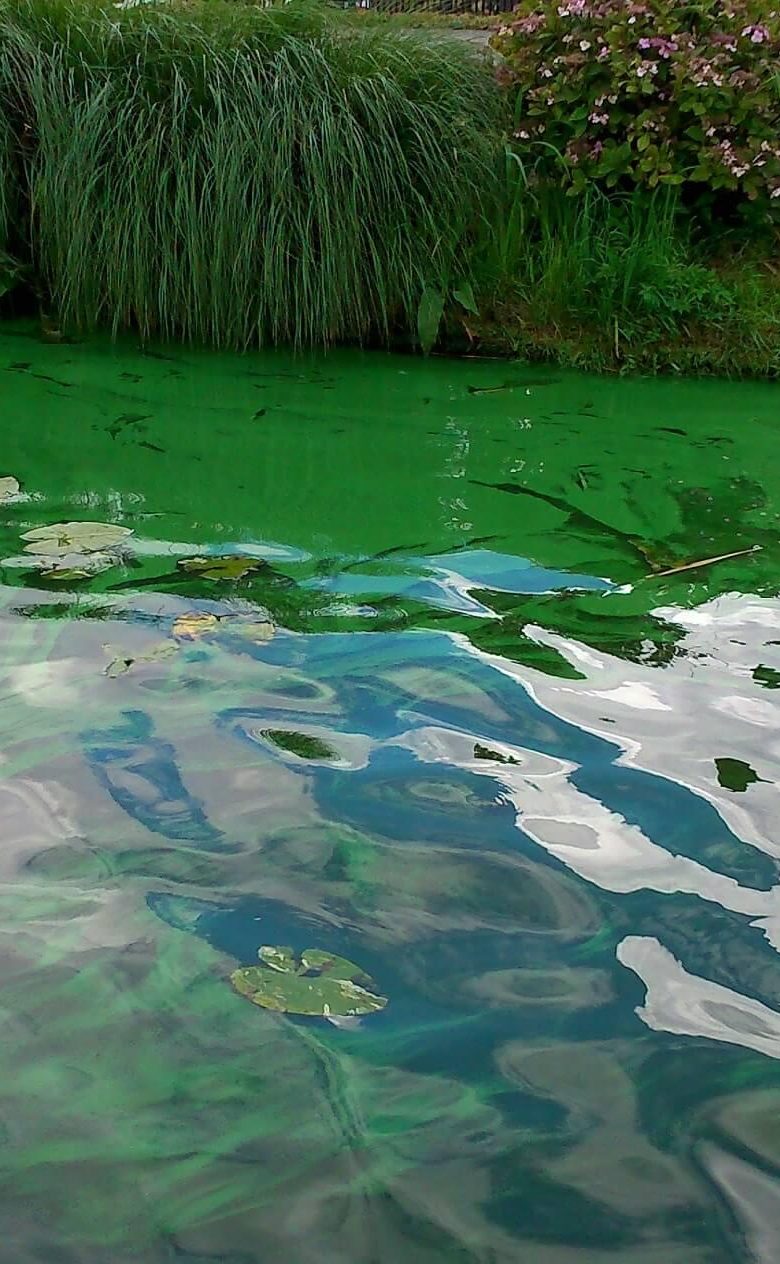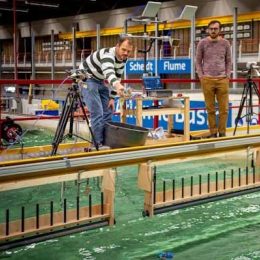The solution for toxic algal blooms is to tackle them at the source
Toxic algal blooms are an increasing problem, not least because they can make it impossible for people to bathe in the summer and cool off when the temperature rises. The toxic substances produced by blue-green algae, officially known as cyanobacteria, may cause the death of animals in the water, disturb aquatic food webs and lead to skin irritation, nausea and headaches among bathers. This worsening environmental problem also constitutes a threat to water used for drinking and irrigation worldwide.

Higher temperatures in the summer months as a result of climate change also make algal blooms, and therefore the risk of waterborne diseases and other negative effects, more likely.
In freshwater, blue-green algae are the most common toxin-producing phytoplankton. In coastal waters, other phytoplankton groups such as red and brown algae can also have negative effects on aquatic ecosystems. For example, when these algae die, a depletion of oxygen in the water may occur. In addition, associated toxins can accumulate in shellfish and cause severe poisoning at higher levels in the food chain, including humans.
Deltares helps government authorities, water authorities, leisure companies and the fishing industry to understand algal blooms better. We propose measures to combat these algal blooms, reduce the associated health risks and restore the ecosystem.
Predicting when and where bathing is safe
Based on the knowledge we have gathered along the years, we advise our clients on the practical consequences of poor water quality caused by blue-green algae. We conduct extensive monitoring and modelling in both coastal waters and freshwater. The models produce short-term predictions, for example to determine whether bathing will be safe at a particular location within the coming days. We also have models for longer periods of time such as a season or a year.
Our monitoring activities involve for example earth observations and DNA screening but we also work with organisations that develop sensors. This is for example used to track algal blooms in large areas such as the Markermeer and IJsselmeer lakes. We then try to find out what the impact of algal blooms may be on the food web in these systems
The best way to prevent toxic algal blooms is to tackle the problem at the source. In other words, try to reduce the nutrient load instead of treating the symptoms.
Miguel Dionisio Pires, expert water quality and algal blooms
At Deltares, we always look at water systems in an integral way. Reducing toxic algal blooms cannot be viewed separately from reducing water pollution by nutrients such as phosphate and nitrogen. ‘Algal blooms are just one symptom of this kind of pollution,’ says Deltares expert Miguel Dionisio Pires. ‘The blooms tell you that something is wrong with the water system. We use combinations of monitoring and modelling to help water managers improve water quality.’
High concentrations of nutrients have a negative effect on most aquatic organisms. Only a limited number of species do benefit: mosquito larvae and a few other, small, animals (for example leeches) then start to dominate. Reducing the amount of nutrients will reduce the biomass of blue-green algae but also make the aquatic system more diverse and therefore allows it to recover.
The Deltares open-source approach for tackling the health risks of algal blooms around the world
Everywhere in the world, nutrients enter surface waters in excessive amounts, for example through groundwater: in South America, Asia, North America and throughout Europe. This leads to health risks for people and ecosystems. Countries in warmer regions often have large surface water reservoirs which is used to produce drinking water. People also fish and bathe in these reservoirs. Preventing the occurrence of toxic algal blooms is therefore important.
Deltares is active worldwide in drawing attention to, and resolving, the health risks. One of the tools we use in this respect is our open-source approach for our algal forecasting models. That approach allows water authorities to predict algal blooms at an early stage and take appropriate action in advance.
Collaboration
We work with different research organizations, such as universities and other research institutes to improve our models and acquire new knowledge. We incorporate this new knowledge into our modelling tools to ensure that this knowledge is also available to future generations .









